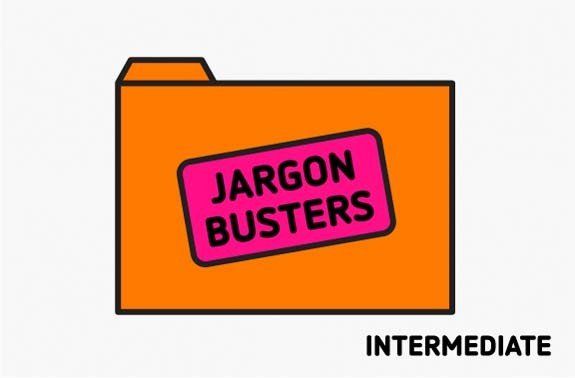Marketing know how – jargon busters
In the second part of our jargon buster series we tackle the intermediate level of marketing knowledge.
Pixels, metadata and bounce rates – we’ve all heard the terms, but what does it all mean?
Evergreen
Like an evergreen tree, evergreen marketing or content lasts long after its publication date, retaining its freshness or interest.
Curate
To curate is to collect. In content terms, this could mean bringing together a collection of content on one topic from around the web, and hosting it all in one location.
Pixel (Facebook’s tracking pixel)
The Facebook tracking pixel is a JavaScript/image tag that you paste onto your website’s pages to track website visitor’s actions.
Lead generation
Lead generation is about attracting and converting new customers, potentially by obtaining contact details such as email address or mobile number information. It is a tool often used to “unlock” content.

Content marketing is the creation and sharing of high quality, valuable content that is optimised for SEO in order to engage and convert prospects into customers.
Bounce rate
A bounce rate is the percentage of sessions in which the website visitor clicked away from your site from the entrance page without interacting with the page.
Content marketing
Content marketing is the creation and sharing of high quality, valuable content that is optimised for SEO in order to engage and convert prospects into customers. The aim is help meet a marketing goal for your business, whether that is brand awareness, customer acquisition or product promotion.
ROI (intermediate)
Your return on investment is the way in which you measure how well your campaign is performing. For many, this takes the form of acquisition, such as subscribers or sales leads. It is essential that your ROI is measurable and aligned to your business goals.
RSS
Rich site summary or really simple syndication is a format for delivering syndicated web content by distributing news headlines from other sites. People are notified of new and changed content that could include news feeds, blogs, news stories and more.
CMS
A content management system is a software application that allows you to create, manage, publish, edit, archive and report on content on a website. You can have a set of users publishing and managing content from anywhere at any time. A commonly used CMS is WordPress.
Metadata
Metadata is data about data. In other words, it provides context or additional information about data explaining how and by whom data was collected and formatted. For example, it may reveal details about the methods, title, subject, author, typeface and method of compilation.
GA (intermediate)
Google Analytics is your marketing friend. Not only is it a way to look at pageviews and traffic trends, but it’s also a great way to track where your audience is coming from, which will help you better target your audience. Through behavioural and source tools, you can uncover more detail on your audience, which can help you better tailor your offering. GA’s goal conversion tool is also another way to measure how well your website is performing for you.
B2B
If your business is focused on selling products or services to other companies, you have a business-to-business model. B2B could involve a wholesaler and a retailer, as opposed to a transaction involving a consumer.
B2C
A business to consumer model suggests a financial transaction or sale between a business and consumer. B2C businesses focus on marketing to their individual consumers to boost sales by addressing their needs, wants and challenges of their consumers to answer their needs.
CTR
The click-through rate is the number of clicks that your ad or content piece receives divided by the number of times it is shown, which measures the success of your ad. i.e. clicks ÷ impressions = CTR. For example, if you had 5 clicks and 1000 impressions, then your CTR would be 0.5%. While the CTA suggests how much interest has been generated, it doesn’t inform you about the number of leads it may or may not have generated.
Engagement rate
An engagement rate is a metric measuring the percentage of people who engaged with an ad or piece of content. Measuring your engagement rate on social media would involve looking at likes, shares, and comments, allowing you to better plan your future social media campaigns by determining what works and needs adjustment.
UX
User experience is about understanding how your user interacts and identifies with web-based systems as a whole, such as a website or application. If you can evaluate how a user experiences your website, for example, you can improve upon its usability, navigation, checkout process or calls to action.
Need help choosing the right marketing solution for your business?
Give us a call on 1800 006 910
to chat with one of our experts, or request a call back.
Related Products
Managed Service
Search Engine Optimisation
Local Starter
from $500 monthly*
Everything a local business needs to get started in SEO
✔ 5 x locally optimised keywords a month
✔ Get started with Google My Business
✔ Talk to our experts for advice
